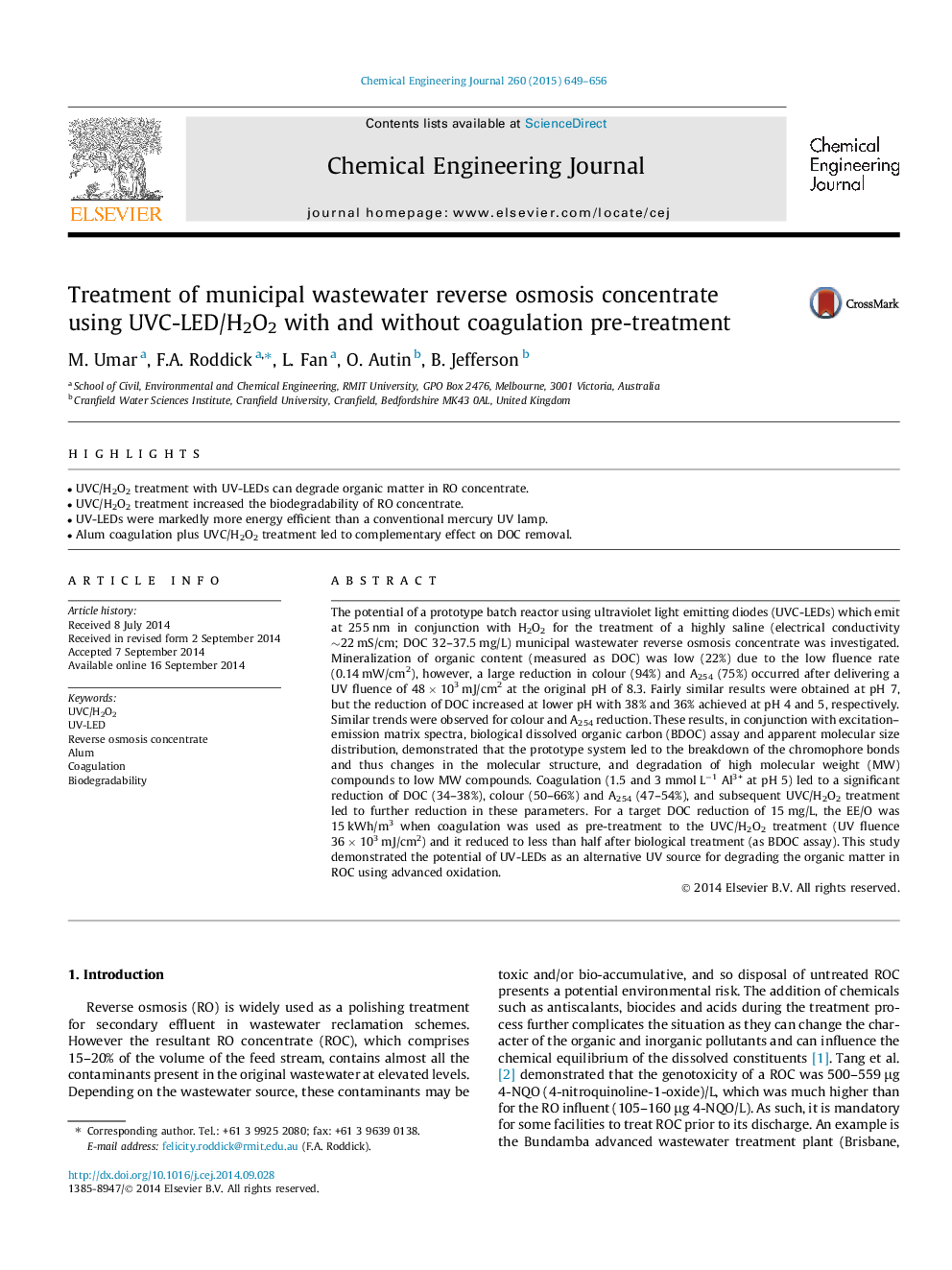| کد مقاله | کد نشریه | سال انتشار | مقاله انگلیسی | نسخه تمام متن |
|---|---|---|---|---|
| 146773 | 456378 | 2015 | 8 صفحه PDF | دانلود رایگان |

• UVC/H2O2 treatment with UV-LEDs can degrade organic matter in RO concentrate.
• UVC/H2O2 treatment increased the biodegradability of RO concentrate.
• UV-LEDs were markedly more energy efficient than a conventional mercury UV lamp.
• Alum coagulation plus UVC/H2O2 treatment led to complementary effect on DOC removal.
The potential of a prototype batch reactor using ultraviolet light emitting diodes (UVC-LEDs) which emit at 255 nm in conjunction with H2O2 for the treatment of a highly saline (electrical conductivity ∼22 mS/cm; DOC 32–37.5 mg/L) municipal wastewater reverse osmosis concentrate was investigated. Mineralization of organic content (measured as DOC) was low (22%) due to the low fluence rate (0.14 mW/cm2), however, a large reduction in colour (94%) and A254 (75%) occurred after delivering a UV fluence of 48 × 103 mJ/cm2 at the original pH of 8.3. Fairly similar results were obtained at pH 7, but the reduction of DOC increased at lower pH with 38% and 36% achieved at pH 4 and 5, respectively. Similar trends were observed for colour and A254 reduction. These results, in conjunction with excitation–emission matrix spectra, biological dissolved organic carbon (BDOC) assay and apparent molecular size distribution, demonstrated that the prototype system led to the breakdown of the chromophore bonds and thus changes in the molecular structure, and degradation of high molecular weight (MW) compounds to low MW compounds. Coagulation (1.5 and 3 mmol L−1 Al3+ at pH 5) led to a significant reduction of DOC (34–38%), colour (50–66%) and A254 (47–54%), and subsequent UVC/H2O2 treatment led to further reduction in these parameters. For a target DOC reduction of 15 mg/L, the EE/O was 15 kWh/m3 when coagulation was used as pre-treatment to the UVC/H2O2 treatment (UV fluence 36 × 103 mJ/cm2) and it reduced to less than half after biological treatment (as BDOC assay). This study demonstrated the potential of UV-LEDs as an alternative UV source for degrading the organic matter in ROC using advanced oxidation.
Journal: Chemical Engineering Journal - Volume 260, 15 January 2015, Pages 649–656